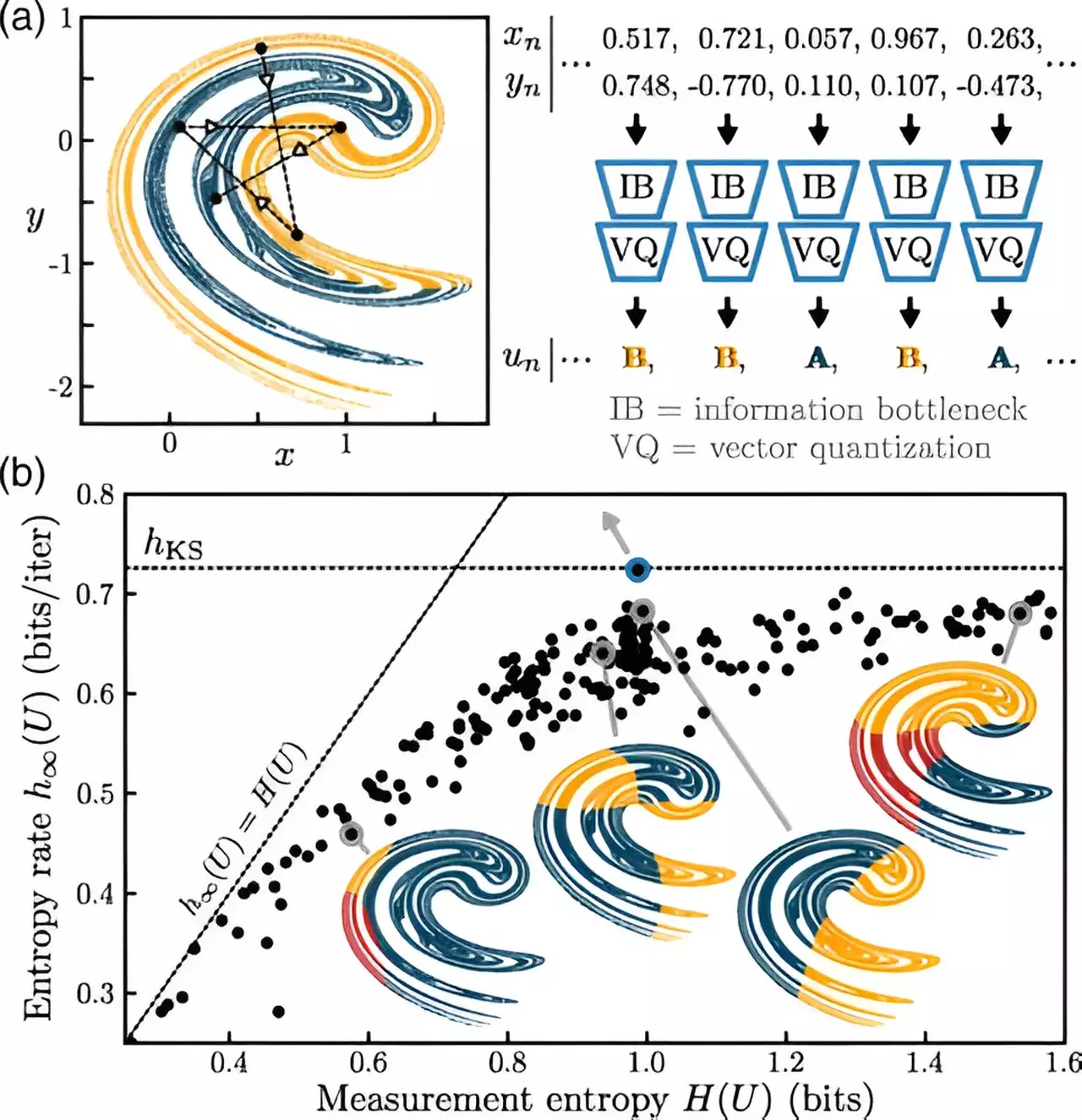For centuries, humanity has grappled with the complexities of chaotic systems. Whether examining the unpredictable nature of weather patterns, the intricate dance of planetary movements, or the fluctuations within ecosystems, we have sought to model and predict behaviors that are, by their very essence, elusive. The inherent nonlinearity of these systems offers both a rich mathematical challenge and a barrier to exact prediction. Dani S. Bassett, a prominent engineer at Penn, alongside Kieran Murphy, a diligent postdoctoral researcher, is breaking new ground in this pursuit by integrating machine learning with chaos theory—a coupling that could revolutionize our approaches to both theoretical models and real-world applications.
The notion of chaos transcends mere unpredictability. In the realm of chaos theory, we must confront systems where small changes can lead to drastically different outcomes. As Murphy aptly illustrates, this behavior is akin to the children’s game of telephone, where the message can morph beyond recognition as it is passed along. In chaotic systems, vital information can dissipate or transform over time, leading to compounding uncertainty that frustrates long-term predictions. A weather forecast, while possibly accurate in the short term, becomes a mere guess when projected weeks into the future. As humans, we may strive for precision, but in the face of chaos, perfect foresight remains an unattainable ideal.
Machine Learning: A Beacon in the Chaos
In their groundbreaking research published in *Physical Review Letters*, Bassett and Murphy harness the strengths of machine learning to delve deeper into chaotic systems. They approach this age-old problem by applying cutting-edge algorithms to classic models of chaos—pure representations devoid of external noise. This controlled setting serves as a fertile ground for exploration, allowing the researchers to validate their methods before grappling with more chaotic, real-world environments.
Murphy’s pioneering approach completely alters how we quantify and interpret information within chaotic systems. While traditional methods, such as the calculation of Lyapunov exponents, require extensive data or a thorough understanding of governing equations, machine learning offers a new paradigm. By leveraging these advanced computational tools, Murphy aims to condense the complexity of chaotic dynamics into cogent measurements that could significantly enhance our weather prediction capabilities and other predictive models.
Machine learning excels at identifying patterns in large datasets—an edge that Murphy is now utilizing to encapsulate an entire chaotic system within a single measurement. His strategy is not merely to forecast future states but to simplify chaotic information into a digestible format, allowing researchers and practitioners to glean insights that would otherwise be buried within convoluted data.
Building a Framework for Understanding
The implications of Murphy and Bassett’s research extend beyond weather patterns to the governing principles of human cognitive processes. The interplay of complex dynamic systems parallels the intricacies of our neural circuitry, and by deciphering the underpinnings of information creation, they are carving pathways toward understanding how the brain facilitates thought and consciousness. In today’s age where mental health issues are of paramount concern, such breakthroughs could lead to innovative methodologies for diagnosis and treatment.
As Murphy expands his research to embrace the temporal dimension in chaotic systems, he builds upon the concept of multivariate information theory, addressing scenarios where multiple informational sources converge over time. Picture a medical examination where myriad tests converge to reveal a patient’s health profile; Murphy envisions articulating similar principles across dynamic systems, whether those be environmental or biological.
Indeed, the potential applications are limitless. By systematically categorizing and analyzing the myriad signals in chaotic systems, researchers can foster innovative solutions that span diverse fields, from enhancing meteorological accuracy to refining medical diagnostics.
Toward a New Age of Insight
While the quest for certainty amidst chaos may be Sisyphean in its nature, the pursuit itself is inherently valuable. The work of Murphy and Bassett not only seeks to push boundaries in chaos theory, but it also embodies human resilience and intellectual curiosity. Understanding how to navigate the fog of uncertainty empowers us, enhancing our capacity to make informed decisions based on the best available data.
As they forge ahead, the fundamental question remains: how can we take these insights and transform them into practical applications that improve our daily lives? By developing sophisticated tools that translate chaotic intricacies into actionable intelligence, there lies a promise of brighter horizons. This is not merely an academic endeavor; it is a vital progression toward solving tangible challenges that affect our well-being, from predicting severe weather events to enhancing mental health interventions. The momentum generated by this research signals a paradigm shift in how we approach, measure, and understand chaos—an endeavor that offers us a glimpse into a future where the chaotic is tamed, at least to some degree, by the brilliance of human ingenuity.


Leave a Reply